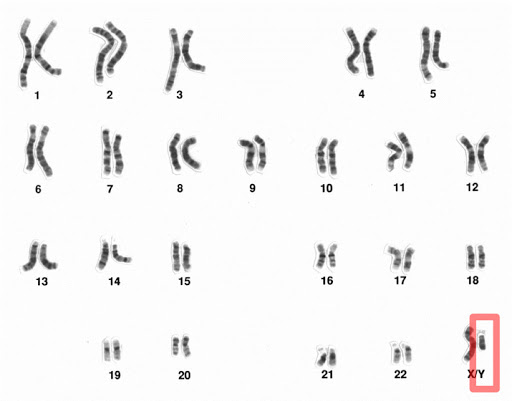Genetic genealogy is the brave new frontier of family history research. Many people’s ancestors left little in the way of a paper trail. Depending on the country, some left none at all. Without documents, it can even be difficult to say much of certainty about someone’s basic ethnic ancestry. DNA tests thus can not only fill in gaps and prove relationships where records don’t exist. They can and do open up vast new vistas of research and give us clues – and sometimes more than just clues – about our deeper origins.
Y-DNA testing is especially useful in this respect. Such tests analyze the DNA on the male-inherited Y chromosome. Such DNA is passed down from father to son and thus demonstrates a paternal lineage. Because these genes mutate very slowly over the generations, Y-DNA testing is excellent for tracing one’s paternal line. It can prove (or disprove) biological relationships. It can give estimates for how long ago two men share a common ancestor, even going back thousands of years. It can reveal both ethnic and geographic origins which would be difficult or impossible to uncover any other way.
I took my first personal dive into genetic genealogy in 2015 with a fairly basic Y-67 test through Family Tree DNA. Per its name, this test looked at 67 short tandem repeat (STRs) markers on my Y chromosome. In 2020 I decided to upgrade and took the ‘Big Y-700’ test through FTDNA. This one tested 700 STRs as well as about 260,000 single nucleotide polymorphisms (SNPs). As with any DNA test, FTDNA not only provides you with your results but also compares them with those of everyone else in their database. As of May 2021 that’s nearly 800,000 other men around the world.
The most obvious thing my Y-DNA tests showed was that our distant Paul cousins are NOT interested in genetic genealogy! The only matches I have yet made are at the genealogically irrelevant level of 12 markers with no common surname. Matches of this kind indicate a shared common ancestor within the past 77 generations. That’s not exactly back to Adam, but it’s probably more than 2000 years ago! In other words, this information is pretty much worthless for genealogical purposes.
A different result from Y-DNA testing, however, has been very worthwhile. That is my – and thus our, if you’re a Paul – haplogroup result. A haplogroup is a genetic population group whose members share a common SNP mutation and thus a common ancestor (a Y-DNA haplogroup is then a group whose members share a common paternal ancestor while a mtDNA haplogroup is a group whose members share a common maternal ancestor). Haplogroups relate to one another like concentric circles, where smaller groups with a more recent common ancestor exist within larger groups with a more distant common ancestor. They are usually represented, however, by branching diagrams typically used in evolutionary biology. Thus you can think of haplogroups as the trunk of a great tree from which large branches proceed, and from those large branches small branches stem, and then twigs from them, and so on.
My Big Y-700 test revealed that the Paul family paternal lineage is haplogroup R-YP263. What does this mean?
SOURCES
Family Tree DNA, “Understanding Y-DNA matches“.

